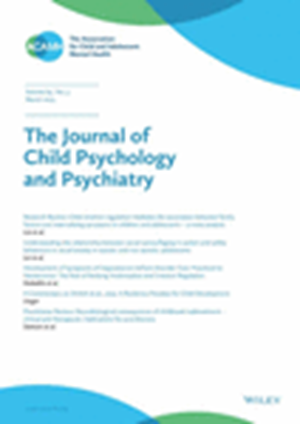Prediction of early‐onset bipolar using electronic health records
IF 6.5
1区 医学
Q1 PSYCHIATRY
引用次数: 0
Abstract
BackgroundEarly identification of bipolar disorder (BD) provides an important opportunity for timely intervention. In this study, we aimed to develop machine learning models using large‐scale electronic health record (EHR) data including clinical notes for predicting early‐onset BD.MethodsStructured and unstructured data were extracted from the longitudinal EHR of the Mass General Brigham health system. We defined three cohorts aged 10–25 years: (1) the full youth cohort (使用电子健康记录预测早发性双相情感障碍
背景:双相情感障碍(BD)的识别为及时干预提供了重要的机会。在这项研究中,我们旨在利用包括临床记录在内的大规模电子健康记录(EHR)数据开发机器学习模型,以预测早发性bd。方法从麻省总医院布里格姆卫生系统的纵向电子健康记录中提取结构化和非结构化数据。我们定义了三个10-25岁的队列:(1)全青年队列(N = 300,398);(2)以心理健康访问定义的亚队列(N = 105,461);(3)诊断为情绪障碍或ADHD的亚队列(N = 35213)。通过采用与临床实践相一致的前瞻性里程碑建模方法,我们开发并验证了一系列机器学习模型,涵盖不同的队列和预测窗口。结果我们发现两种基于树的模型,随机森林(RF)和光梯度增强机(LGBM),在不同的临床环境中具有良好的判别性能(RF和LGBM的受试者工作特征曲线下面积分别为0.76-0.88和0.74-0.89)。此外,我们还展示了使用大大减少的特征集可以实现相当的性能,这表明可以在不显著损害模型精度的情况下获得计算效率。结论利用大规模电子病历数据,预测早发性BD的模型具有良好的判别性能。我们的研究提供了一种可扩展且准确的方法来识别有双相障碍风险的年轻人,这有助于为临床决策提供信息并促进早期干预。未来的工作包括评估我们的方法对其他医疗保健系统的可移植性,并探索有关可能实施的考虑因素。
本文章由计算机程序翻译,如有差异,请以英文原文为准。
求助全文
约1分钟内获得全文
求助全文
来源期刊
CiteScore
13.80
自引率
5.30%
发文量
169
审稿时长
1 months
期刊介绍:
The Journal of Child Psychology and Psychiatry (JCPP) is a highly regarded international publication that focuses on the fields of child and adolescent psychology and psychiatry. It is recognized for publishing top-tier, clinically relevant research across various disciplines related to these areas. JCPP has a broad global readership and covers a diverse range of topics, including:
Epidemiology: Studies on the prevalence and distribution of mental health issues in children and adolescents.
Diagnosis: Research on the identification and classification of childhood disorders.
Treatments: Psychotherapeutic and psychopharmacological interventions for child and adolescent mental health.
Behavior and Cognition: Studies on the behavioral and cognitive aspects of childhood disorders.
Neuroscience and Neurobiology: Research on the neural and biological underpinnings of child mental health.
Genetics: Genetic factors contributing to the development of childhood disorders.
JCPP serves as a platform for integrating empirical research, clinical studies, and high-quality reviews from diverse perspectives, theoretical viewpoints, and disciplines. This interdisciplinary approach is a key feature of the journal, as it fosters a comprehensive understanding of child and adolescent mental health.
The Journal of Child Psychology and Psychiatry is published 12 times a year and is affiliated with the Association for Child and Adolescent Mental Health (ACAMH), which supports the journal's mission to advance knowledge and practice in the field of child and adolescent mental health.

 求助内容:
求助内容: 应助结果提醒方式:
应助结果提醒方式:


